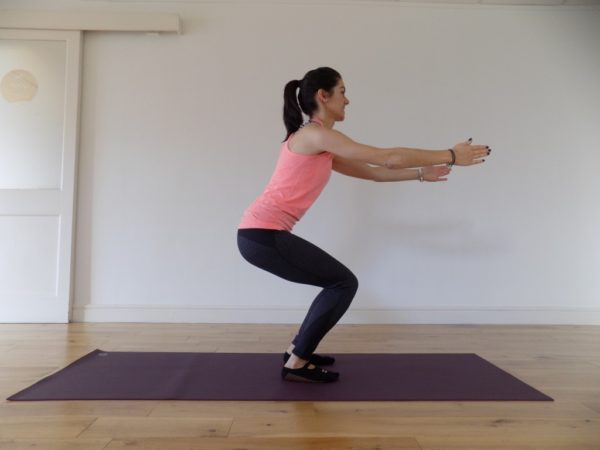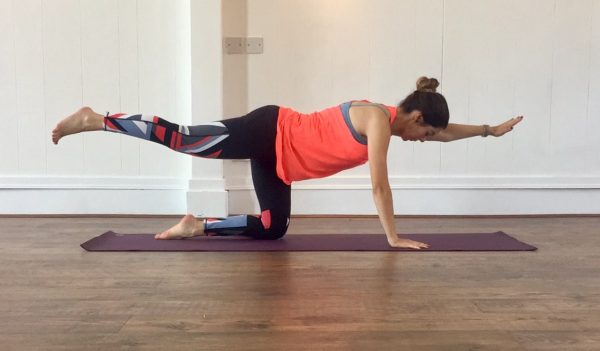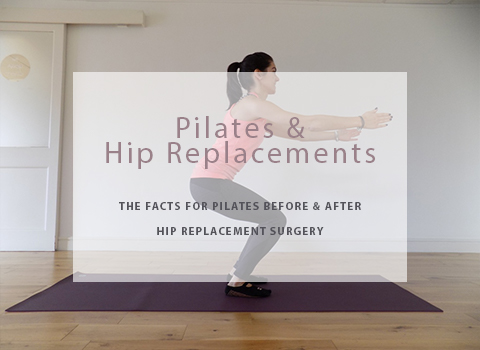Hip joint pain can cause severe pain and disability and greatly impact on a person’s quality of life. Hip replacement surgery is when the hip joint is replaced with a prosthetic implant. It is usually performed due to osteoarthritis, joint damage, childhood deformities, or other pathology that wears down the joint. Pilates can help significantly both before and after surgery- here we will discuss its role with hip replacements.
Prior to surgery there is often an altered gait pattern as a result of compensating for the pain. Other muscles may be used to help ease the hip pain and reduce weight bearing through the painful joint. These altered walking strategies also promote the mal-alignment of muscle fibres. Muscle fibres form in the direction of the force applied to them, therefore if the force is altered through compensation the muscle fibres will lay down in this faulty pattern. This further enhances incorrect biomechanics.
Completing a pilates programme prior to surgery is very beneficial to re-educate the body how to move correctly. A well structured pilates programme can maintain hip and knee movements, as well as general strength. Incorporating upper body strength exercises is also paramount because the shoulders will have to support you and the use of walking aids initially post-surgery.
Overall a prehab pilates plan will encourage success of the surgery as you are starting from a better place than if your muscles had no input at all. Exercising safely beforehand can restore confidence and remove fear from exercising and moving in association with pain. These factors all elevate motivation post-surgery and speed up recovery. Functional exercises like mini squats are great to practise as this will help with getting up from the bed/chair post-surgery.

Post-surgery
During the surgery the joint has to be dislocated. This makes the joint unstable after surgery and the surrounding muscles and ligaments are weakened as a result of being stretched and traumatised.
Post-surgery goals:
- Restore range of movement
- Correct posture and alignment
- Correct gait pattern
- Dissociate hip and lumbar spine movements
- Strengthen hip joint
- Improve balance
Pilates is an excellent treatment for these post-surgical hips because it focuses on quality of movement rather than quantity. Pilates teaches precise movements, from the core but then incorporating upper and lower limb control too. This provides strengthening and elongation for the whole body. Pilates teaches alignment and corrects compensation strategies so that the body moves efficiently and with a normal gait pattern.
Rehab exercises will be very tiring initially post-surgery. 1-2-1 care is recommended to ensure correct technique, and safe exercises at this vulnerable time. Pilates classes could commence around 6 weeks post-op if the person has only minimal discomfort, can safely get on and off the floor, and complete several level 1 pilates exercises well. Ideally they would also be stable on their feet and not a falls risk.

Precautions post-surgery
To avoid the risk of dislocating the hip joint when it is vulnerable initially post-surgery surgeons usually advise on the following precautions:
- Avoid hip flexion beyond 90 degrees
- Avoid crossing the midline ie crossing legs
- Avoid rotation of the hip joint
Suggested pilates plan
This is just a suggested pilates plan and should be modified to suit each individual and their current level of progress.
| Exercise suggestions | Aims | |
| 0-3 weeks |
|
|
| 3-6 weeks |
|
|
| 6-12 weeks |
|
|
| 12 weeks + |
|
|


